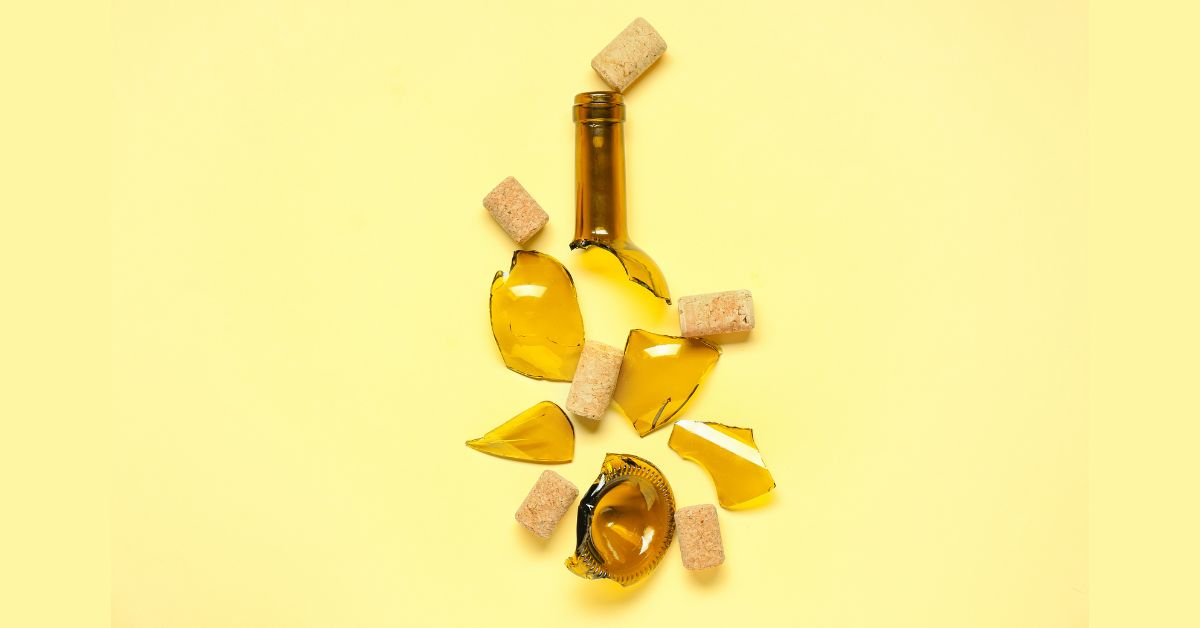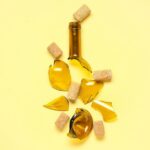Let’s set the scene. You’re dining out at a swanky restaurant and you decide to purchase a bottle for the table (because you’re a baller like that.) You spend a few minutes studying the menu, put the order in with the server, and wait for your 750 mL to hit the table.
But, hark! The waiter returns and pours you a glass. You take it. You thoughtfully sniff, swirl, and sip, because you know that now is your time to put your wine education to the test! And you determine that your wine is… flawed.
At least, that’s what we fantasize about throughout our wine education, right? Personally, I daydream about being the wine lover who can sniff out spoilage on a whim. The ability to discern wine faults truly is a testament to one’s expertise. Getting your nose to that caliber of fault detection can take years of experience, but if you’re here, you’re starting on the right foot. Though there are many widely disputed wine faults, in this article, we will be focusing on the wine faults that we all can agree upon. Here is everything you need to know about the most common wine faults.
Cork Taint
2,4,6-trichloroanisole, otherwise known as TCA, or cork taint. When you’re talking wine faults, cork taint is usually the one that comes to top of mind. Several wine faults on this list can easily fly under the radar, and in some instances, be preferred (see our article on Brettanomyces!)— but cork taint is undisputed as a spoilage. If there is any fault you should know how to identify, it’s cork taint.
Here’s what you need to know about the king of all wine faults.
What Causes Cork Taint
TCA compounds are formed in the bark of the cork tree when certain molds, bacteria, and or fungi come in contact with insecticides and herbicides collectively referred to as halophenols. These biocides were commonly used in farming from the 1950s to the 1980s, and though they are not commonly used in farming today, reminiscences of these chemical properties remain in the soil and can interact with plant matter grown where halophenols were once used.
Fungi and certain bacteria have a defense mechanism against halophenols that alters the chemical compounds of the halophenols, creating TCAs in the process. The bark from these trees are processed into wine closures, and wine closures with enough releasable TCAs will transfer them into the wine, causing the bottle to become “corked.”
The Cork Quality Council reports that roughly three percent of corks are afflicted with cork taint, making the ability to detect it all the more important. However, TCA-affected wine is brought on by more than just infected wine closures. Cork taint can infect barrels and winery equipment, and in the worst cases, an entire winery. One tainted cork isn’t likely to do this kind of damage, but TCA can also form on wooden barrels, floors, and beams, which can quickly get out of control in a winery.
This process occurs when bleach comes in contact with lingin, a naturally occurring wood compound. Wood is composed of about 25% lingin, and when it interacts with bleach, it creates a compound called 2,4,6-trichlorophenol, or TCP. If certain molds, yeasts, or bacteria come into contact with TCP, they will convert the compound to TCA.
This is why wineries don’t clean with bleach, opting instead for various acid and alkaline based cleaners like citric acid and peroxy.
How to Identify Cork Taint
Here’s the good news: humans are extremely perceptive to the TCA compound. So, if you know what you’re looking for, you’re likely to be able to sniff it out. Cork taint is known for its musty, moldy scent reminiscent of wet cardboard or wet newspaper. It can also be noticed by a complete lack of typical wine aromatics.
The musty aromas of cork taint will be most saturated on the wet end of the cork. You can even give the cork a sniff as soon as it’s removed from the bottle! If you don’t catch cork taint there, check for it in the glass. A tainted wine may not reek of concentrated wet cardboard, but its natural aromas will be muted by a musty smell.
Can You Fix It?
Unfortunately, TCA corked wine has no fix, and though it is not dangerous to your health, you’re better off not drinking it. There is evidence to suggest that plastic can cling to TCA and remove the flaw to a certain extent, but we don’t advise putting plastic in your wine at any time, because plenty of other delicate flavors and aromas that make wine delicious will be stripped away as well.
While there is no way to fix a wine exposed to cork taint, there is a new development to stop it from the source. TCA-free guaranteed wine closures are a promising solution to this issue. TCA-free closures are made with reconstituted cork, that has been purified on the molecular-level, and reshaped into the classic wine cork shape.
If you order a corked wine at a restaurant, you should send it back. And if you purchased a corked bottle to drink at home, consider it a win for your palate, you’ve successfully identified the big bad wolf of wine faults! Reputable retailers will likely reimburse you for tainted wine; First Bottle being one!
Heat Damage
Several faults can occur after a wine has left the winery. Sometimes, a bad wine is chalked up to user error– here’s how to prevent and identify heat damaged wine.
What Causes Heat Damage
Ever forgot a wine bottle in a hot car? Chances are, the wine inside was tainted as a result. Heat damage occurs when a bottle is exposed to prolonged high temperatures, about 80 degrees fahrenheit or more. Heat damage is most likely to occur in the shipping process or as a result of improper storage.
When the fate of your bottle is outside of your hands, there’s not much you can do about heat damage. The best wine retailers will be vigilant about heat damage, offering ice packs, or hold options when the weather is not conducive to safe transit. (First Bottle offers both!)
When storing wine long-term, it is imperative that the bottles be kept at an ideal temperature, about 55 degrees fahrenheit. If your bottles are exposed to heat for too long, they can become tainted. Don’t store your wines above your fridge or next to your oven; prolonged mid-range heat can also destroy a wine.
How to Identify Heat Damage
If you suspect that your bottle is cooked, start by inspecting it. In the worst cases of heat damage, a wine’s cork will protrude from the neck of the bottle, and the sides of the cork will be soaked in wine.
If the suspected heat damage is not detectable straight away, pour it into a glass and taste. When you uncork, you may notice a sticky residue formed along the cork and neck of the bottle. Once poured into a glass, cooked red wine will turn a dark brownish color, and whites will appear a darkened brownish-yellow.
Essentially, heat damaged wines taste cooked. A heat damaged wine will taste stewed and jammy, and may present notes of soy sauce or burnt caramel.
Can You Fix It?
Unfortunately, if your wine has endured heat damage, there is no way to fix it. You can, however, keep cooking it by adding it to whatever you’re making for dinner!
If your wines have been delivered with heat damage, get in touch with your retailer; they will likely offer you compensation for the damaged product. Though cooked wines are rare at First Bottle, we will always make it right. If your package is damaged, shoot us an email at help@firstbottlewines.com.
Lightstrike
Wine and vampires have one thing in common: sunlight will kill them… Or at the very least, dull their natural aromas and flavors. Your bottles are best stored in a cool, dark place.
What Causes Lightstrike
Lightstrike occurs when your bottle is exposed to UV and blue lights, either from direct exposure to the sun or prolonged exposure from fluorescent tube lighting. Light reacts with the riboflavin in the wine, causing it to photo-oxidize methionine. Riboflavins (vitamin B2) are present in meats, dairy, fortified foods like tofu, and are found in a few fruits and vegetables, including avocados, spinach, and grapes.
These naturally occurring compounds are photosensitizers that absorb wavelengths of light and convert them into useful energy. These are useful to the grapes while they remain on the vine, but when riboflavins are set off in the bottle, they will create unsavory sulfite compounds in the wine.
Delicate white wines, bubbles, and rosés are more likely to be affected by lightstrike, but no wine is safe from the effects of UV exposure. However, certain types of bottles can leave your bottle more vulnerable than others. A 2019 study on the effect of UV light on wines showed that clear glass offers the least protection from the rays, shielding 10% of harmful light; green glass bottles provide 50% protection from harmful light; and amber glass offers the most protection, shielding 90% of harmful light.
Even just an hour of exposure to UV light is enough to start this chemical reaction, and can render your wine undrinkable. We aren’t just talking about bottles left in the hot sun on a picnic. Any prolonged exposure to UV rays can impact your wine inside, even the time that your wine sits under the fluorescent at the store can make an impact.
In that same 2019 study, they monitored wines in typical supermarket conditions for 50 days, and found that every white wine they tested that was bottled in clear flint glass developed lightstrike after 20-40 days on the shelf. Flint glass bottles stored on the bottom shield developed light strike only a few days later than the wines stored on the top shelf. Green bottles, however, secured the wines for the entirety of the testing period.
Most savvy wine shoppers will know not to store their wines in direct light, but they may not know that their wines could be damaged with lightstrike before they have even brought it home.
How to Identify Lightstrike
Here’s the good news– a mild case of lightstrike is extremely difficult to perceive. Small amounts of photo-oxidized methionine can exist in your wine without you ever knowing. However, if you’re picking up notes of cooked cabbage, stinky cheese, rotten eggs, or even raw sewage, then you’ve got a serious case of lightstrike on your hands.
Can You Fix It?
There is no way to remedy a case of lightstrike, there are only tools for prevention. To keep your wine from developing lightstrike, keep it in a dark storage spot. When shopping for wines, make sure that your clear-bottled wines have not been sitting in the fluorescent for more than 20 days. Or just grab a bottle from us; we’re wine people who take every step possible to keep our bottles safe, including keeping wines boxed in our warehouse until their date of shipment.
In Conclusion
Understanding the science behind wine faults is crucial for both wine enthusiasts and professionals in the industry. Wine, with its intricate chemical composition, can be subject to various faults that may compromise its quality and flavor. By delving into the chemistry and microbiology of wine, we’ve unraveled the mysteries of these faults, shedding light on the processes responsible for off-flavors, aromas, and other undesirable characteristics.
From cork taint caused by 2,4,6-trichloroanisole (TCA) to the impact of sulfur compounds on wine’s aroma, the science of wine faults underscores the complexity of the vino in your glass. Recognizing these faults, their causes, and preventive measures allows winemakers to craft better wines, while consumers can make informed choices when selecting a bottle.
The best way to sniff out wine faults is to know what a wine is supposed to taste like. Lucky for you, we have a shop full of premium wines to supplement your education– check out today’s featured wine.












